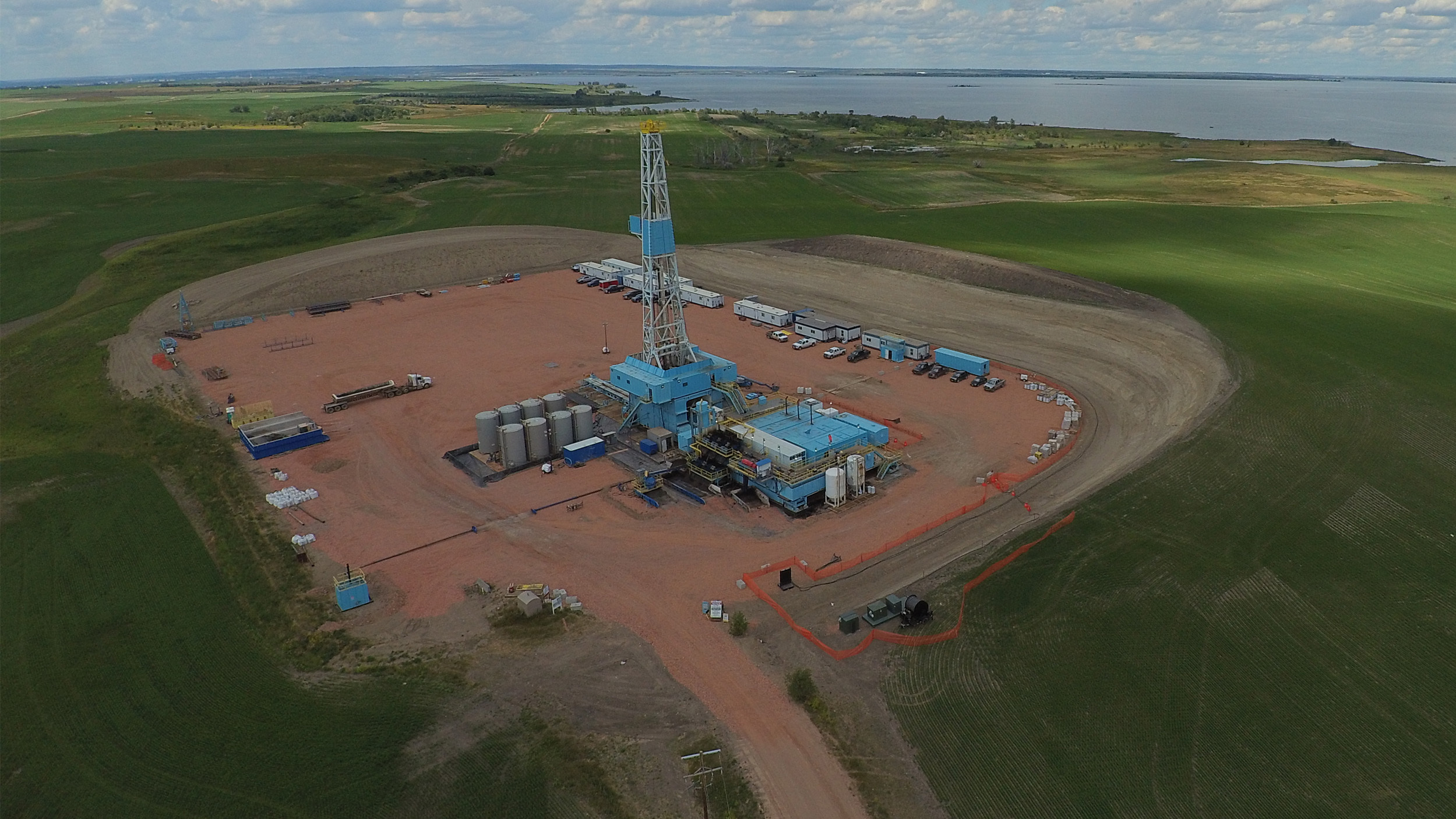 Search
Search
 Search
Search

Customized water-based fluid system including BaraSeal™-957 prevents fluid invasion in fractured formation
Download PDF
WILLISTON BASIN, NORTH DAKOTA

Drill through weak and fractured shales overlying the reservoir using a WBM
North American operators typically rely on oil-based drilling fluids (or OBMs) to drill troublesome shales, as they do not require much treatment and allow high-efficiency drilling to target depth. However, in rare instances, OBM cannot be used. A major operator in the Williston Basin of North Dakota needed to obtain hydrocarbon-free formation samples, requiring a water-based fluid (WBF) solution to drill the intermediate and curve sections through Bakken Shale.
The operator’s past experience with a competitor’s WBF ran into complications, which can occur with this fluid type while drilling and tripping — ultimately causing a failure to land casing at target depth. The worst of these issues was deteriorating wellbore conditions over time, as well as difficulties with running casing to bottom and cementing the section. A new approach was clearly needed, focusing on the formulation of a “wellbore-stabilizing” WBF.
A variety of high-performance WBF systems have been promoted as viable OBM replacements, but none of them fit the specific requirements for Williston Basin. Freshwater sources, preferred for these fluids, were scarce in the region while produced water was plentiful. The intermediate well sections also had an ever-present risk of losing fluid downhole due to weak, fractured shale. Therefore, a new formulation had to remain cost-effective to guard against potential budget overruns.
Baroid fluids personnel followed a multi-stage process to design a customized fluid program. The team began with an existing formation analysis to gauge how reactive and dispersive the drilled formations would be. This data was combined with experience previously gained from offset wells. A simple salt gel base design was decided upon and supplemented with functional components to address the specific challenges.
BaraSeal™-957 wellbore sealant was targeted for use in building the curve section. This polymer-based additive forms small globules once hydrated (see Figure 1). These bond with biopolymers and solids to seal off small fractures and permeable zones, minimizing invasion to stabilize the weaker shales.
BaraSeal-957 (originally BDF™-957 or BaraSeal IE-957) previously delivered positive results with OBM systems on two wells drilled in the North Sea from 2020-2021.
Once planning was complete, drilling began with the surface hole drilled using freshwater. Then, the newly formulated fluid system was displaced into the well. Filtration control was programed and maintained at a moderate level. Challenges with solids influx became apparent by 8,200 ft and again at 10,600 ft due to issues with shaker screen selection. Dilution parameters and screens were modified, and sweeps with glycol and a coating agent were pumped throughout the interval to alleviate bit balling.
When the kick-off point was reached, filtration control was improved again with the addition of sulfonated asphalt and BaraSeal-957 to seal the formation and offer greater pressure support through the curve and into the upper shale at the casing point. Hole conditions remained ideal for the casing run, which reached full depth in 12 hours with no issues.
All four trips to surface during the interval were reported to be smooth, without any signs of hole instability. Lessons learned were captured, and shaker screen selection and solids control (de-watering) optimization were identified as areas of improvement. Given the favorable economics and positive results shown by replacing OBM, the operator plans to have Baroid service additional wells with the same WBM fluid solution. With the goal of maximizing wellbore stability for additional North American operators, Halliburton expects to fully commercialize this WBF system under the BaraShale® Max fluid brand in the near future.

Halliburton Baroid is at the forefront of the drilling and completion fluids industry.
